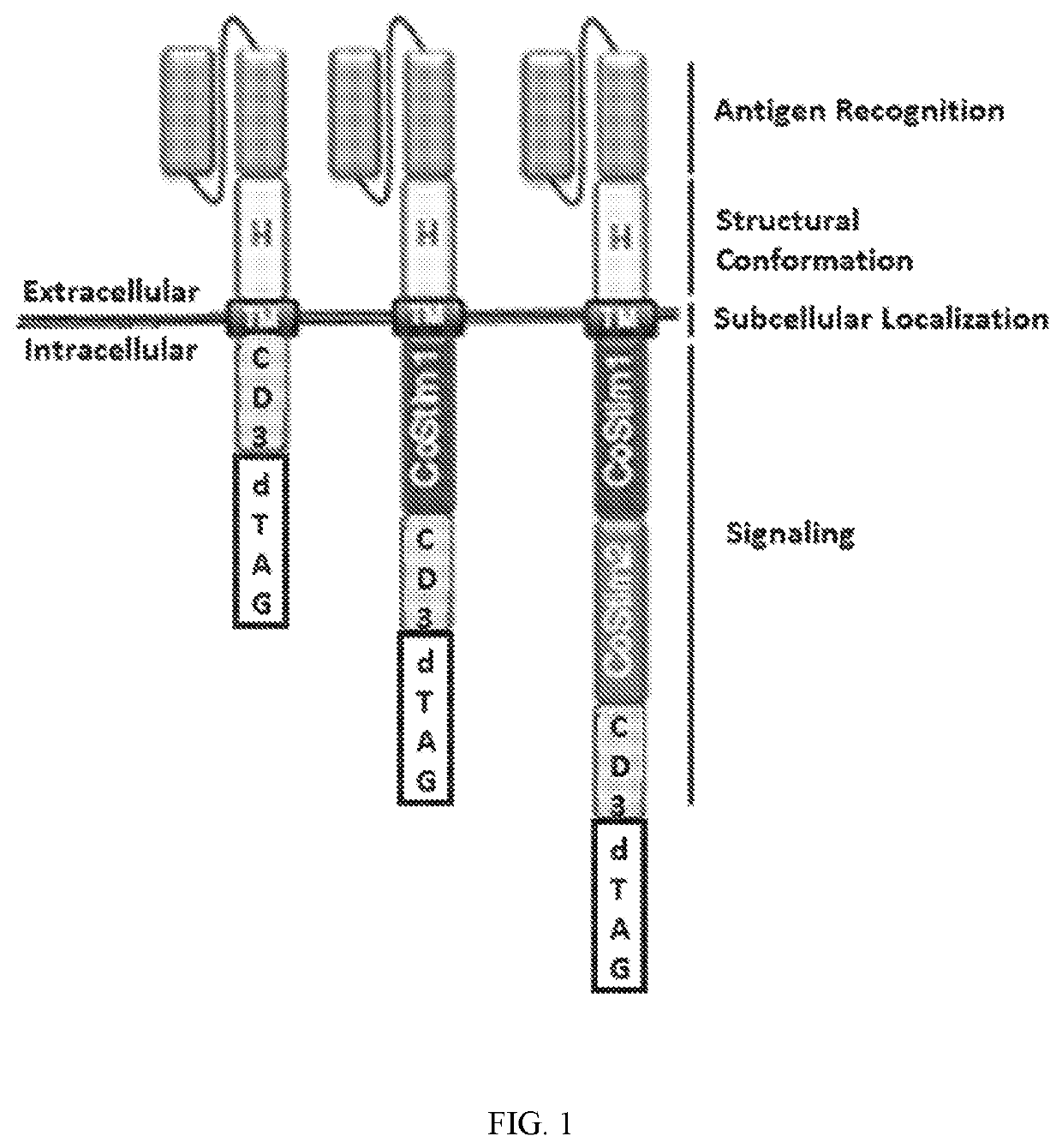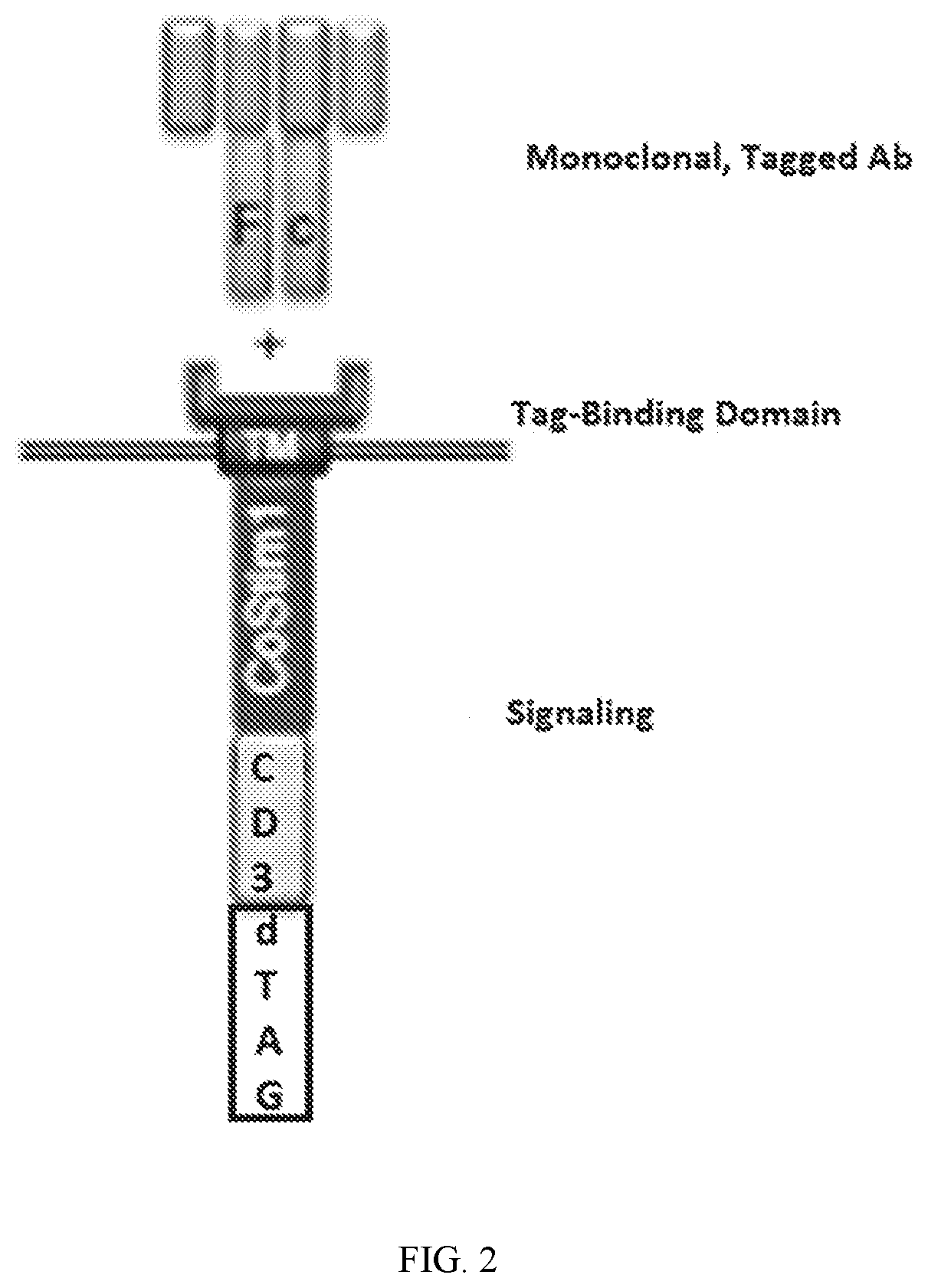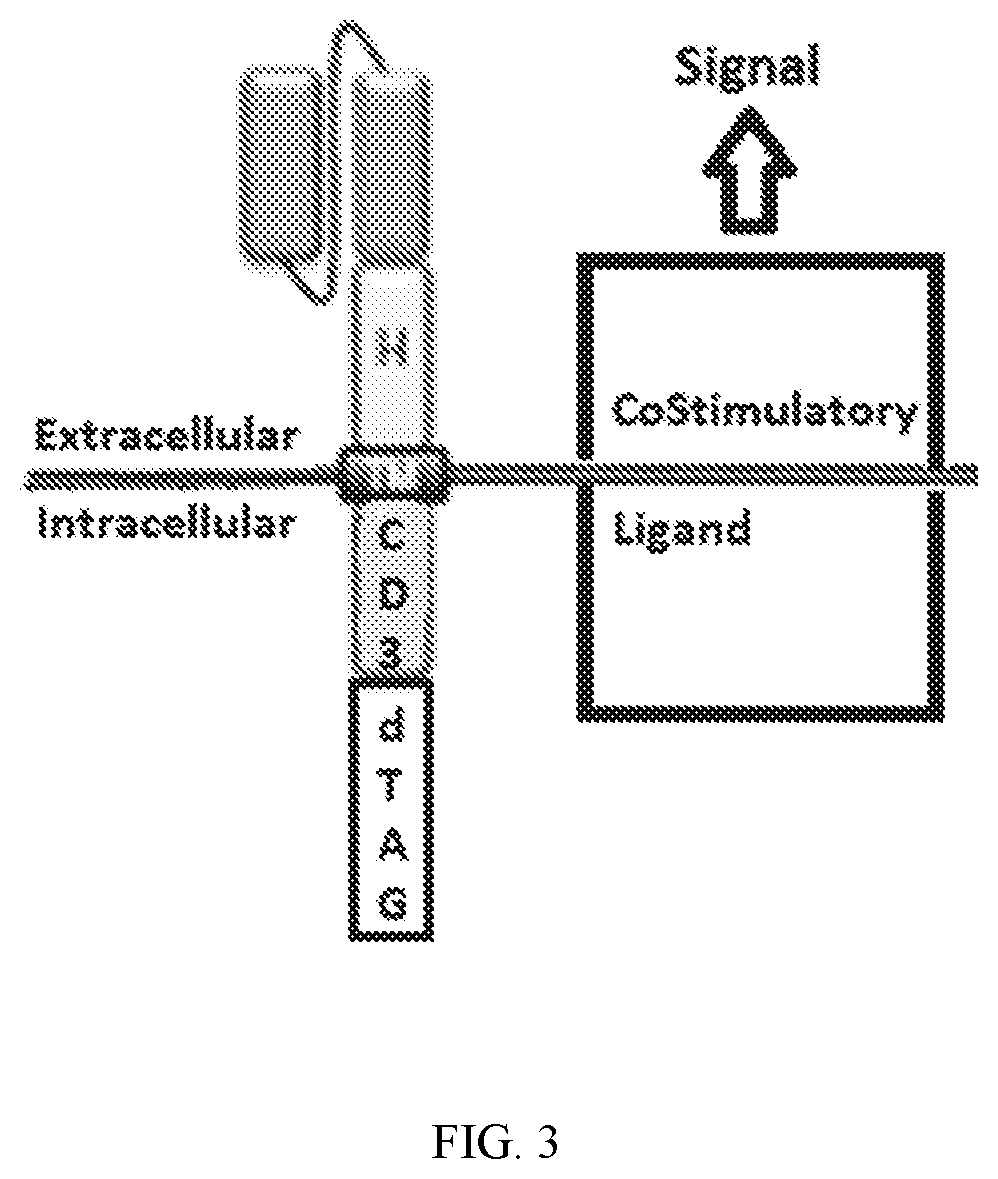Targeted protein degradation to attenuate adoptive t-cell therapy associated adverse inflammatory responses
a technology of chimeric antigen receptor and target protein, which is applied in the direction of immunoglobulins, peptides, drugs against animals/humans, etc., can solve the problems of impaired autoregulation, severe cytokine release syndrome, and inability to achieve significant side effects, etc., to achieve high transfection efficiency, improve the effect of introduction efficiency and high transfection efficiency
- Summary
- Abstract
- Description
- Claims
- Application Information
AI Technical Summary
Benefits of technology
Problems solved by technology
Method used
Image
Examples
example 1 ′
Example 1′: Synthesis of IMiD Derivatives and Degrons
[0742]
General Procedure I: IMiD Condensation
2-(2,6-dioxopiperidin-3-yl)-4-hydroxyisoindoline-1,3-dione (D-1)
[0743]In a 20 mL glass vial, a mixture of 3-hydroxyphthalic anhydride (500 mg, 3.05 mmol, 1 equiv), potassium acetate (927 mg, 9.44 mmol, 3.1 equiv) and 3-aminopiperidine-2,6-dione hydrochloride (552 mg, 3.35 mmol, 1.1 equiv) in acetic acid (10.2 mL, 0.3 M) was heated to 90° C. overnight. The black reaction mixture was cooled to room temperature and diluted to 20 mL with water, and subsequently cooled on ice for 30 min. The resulting slurry was transferred to a 50 mL Falcon tube, which was centrifuged at 3500 rpm for 5 min. The supernatant was discarded and the black solid was transferred to a 250 mL RBF with methanol and concentrated in vacuo. The residue was purified by flash column chromatography on silica gel (CH2Cl2:MeOH (9:1)) to afford the title compound as a white solid (619 mg, 74%). 1H NMR (400 MHz, DMSO-d6) δ 11.0...
example 22
of dBET22
[0870]
[0871]A 0.1 M solution of N-(4-aminobutyl)-2-((2-(2,6-dioxopiperidin-3-yl)-1,3-dioxoisoindolin-4-yl)oxy)acetamide trifluoroacetate in DMF (247 microliters, 0.0247 mmol, 1 eq) was added to (S)-4-(4-chlorophenyl)-6-(2-methoxy-2-oxoethyl)-3,9-dimethyl-6H-thieno[3,2-f][1,2,4]triazolo[4,3-a][1,4]diazepine-2-carboxylic acid (10.98 mg, 0.0247 mmol, 1 eq) at room temperature. DIPEA (12.9 microliters, 0.0740 mmol, 3 eq) and HATU (9.4 mg, 0.0247 mmol, 1 eq) were added. The mixture was then stirred for 21 hours, then diluted with EtOAc and washed with saturated sodium bicarbonate, water and brine. The organic layer was dried over sodium sulfate, filtered and concentrated under reduced pressure. Purification by column chromatography (ISCO, 4 g silica column, 0-10% MeOH / DCM, 25 minute gradient) gave the desired product as a white solid (9.79 mg, 0.0118 mmol, 48%). 1H NMR (400 MHz, Methanol-d4) δ 7.80 (dd, J=8.4, 7.4 Hz, 1H), 7.51 (dd, J=7.1, 1.5 Hz, 1H), 7.48-7.34 (m, 5H), 5.11 (d...
example 23
of dBET23
[0872]
[0873]A 0.1 M solution of N-(8-aminooctyl)-2-((2-(2,6-dioxopiperidin-3-yl)-1,3-dioxoisoindolin-4-yl)oxy)acetamide trifluoroacetate in DMF (220 microliters, 0.0220 mmol, 1 eq) was added to (S)-4-(4-chlorophenyl)-6-(2-methoxy-2-oxoethyl)-3,9-dimethyl-6H-thieno[3,2-f][1,2,4]triazolo[4,3-a][1,4]diazepine-2-carboxylic acid (9.87 mg, 0.0220 mmol, 1 eq) at room temperature. DIPEA (11.5 microliters, 0.0660 mmol, 3 eq) and HATU (8.4 mg, 0.0220 mmol, 1 eq) were added. The mixture was then stirred for 21 hours, then diluted with EtOAc and washed with saturated sodium bicarbonate, water and brine. The organic layer was dried over sodium sulfate, filtered and concentrated under reduced pressure. Purification by column chromatography (ISCO, 4 g silica column, 0-10% MeOH / DCM, 25 minute gradient) gave the desired product as a white solid (8.84 mg, 0.00998 mmol, 45%). 1H NMR (400 MHz, Methanol-d4) δ 7.81 (dd, J=8.4, 7.4 Hz, 1H), 7.53 (d, J=7.3 Hz, 1H), 7.50-7.39 (m, 5H), 5.12 (dd, J=1...
PUM
 Login to View More
Login to View More Abstract
Description
Claims
Application Information
 Login to View More
Login to View More - R&D
- Intellectual Property
- Life Sciences
- Materials
- Tech Scout
- Unparalleled Data Quality
- Higher Quality Content
- 60% Fewer Hallucinations
Browse by: Latest US Patents, China's latest patents, Technical Efficacy Thesaurus, Application Domain, Technology Topic, Popular Technical Reports.
© 2025 PatSnap. All rights reserved.Legal|Privacy policy|Modern Slavery Act Transparency Statement|Sitemap|About US| Contact US: help@patsnap.com



